Find Ciscoes to Catch Big Smallies
How Wisconsin pro Cody Hahner targets big brown bass in the late season
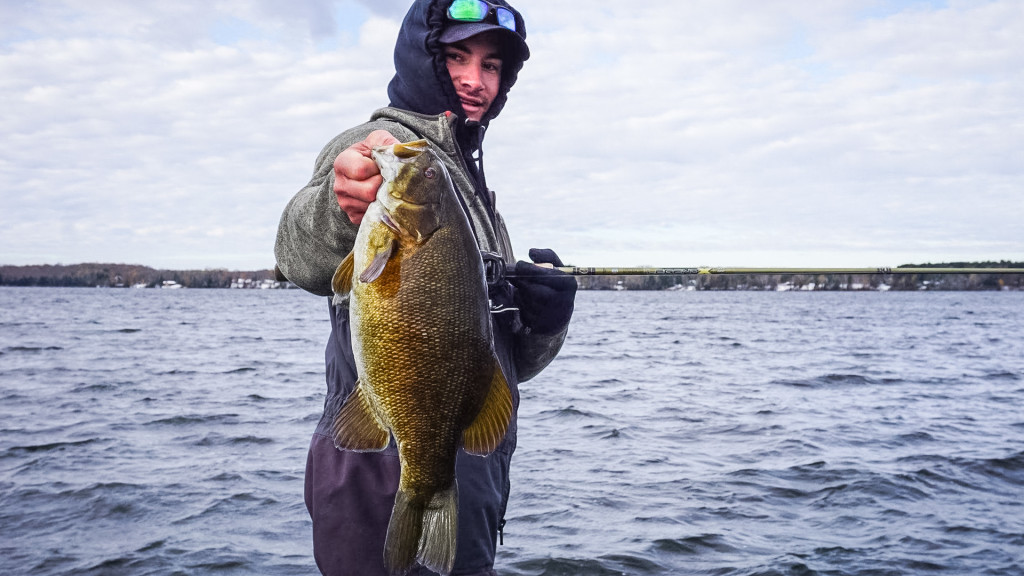
Catching the biggest bass in a given body of water usually doesn’t happen by accident. Finding the right mix of forage and structure – along with other ingredients – can make all the difference. When it comes to big smallmouths up north in the fall, to truly put the odds in your favor you might need to veer off the beaten path and look for forage that doesn’t get a ton of attention all year.
Enter the cisco – a key ingredient for growing big smallies.
FLW Tour pro Cody Hahner grew up in north central Wisconsin and has recently dialed in the cisco-smallmouth connection.
“Unless I’m fishing local, all I do is target smallmouths in lakes that have ciscoes,” says Hahner. “Fall is really the best time to target these fish because you can find them in the spring, but by summer they are gone. It took me a really long time to figure out how smallmouths relate when suspended over deep water chasing ciscoes. They aren’t easy to catch throughout most of the year, but when the water starts to cool in the fall, that’s when the ciscoes start to move shallow to spawn, and that makes those smallmouths easier to target.”
We picked Hahner’s brain for information to help you try to target some of the biggest smalljaws around.
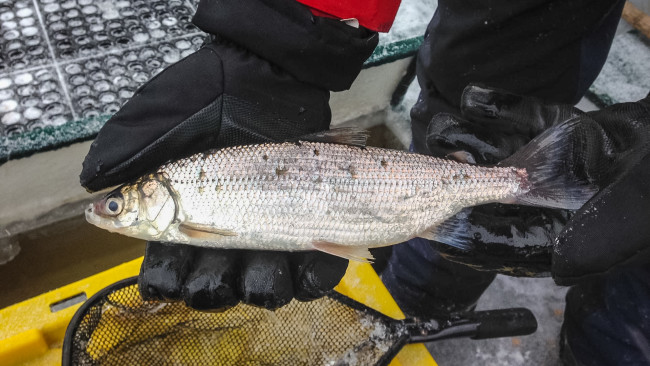
Know the cisco
There’s no doubt that crawfish and perch make up the majority of a smallmouth’s diet throughout much of their northern range. And there’s no doubt smallies can grow to substantial sizes when feeding on them. In many lakes across the North, however, it is the cisco – also known as the tullibee – that really helps brown bass pack on the pounds.
Ciscoes are cold-water fish and really don’t tolerate high temperatures very well. Because of that they are found in deep, clear lakes from Minnesota to New York. They can reach upward of 4 pounds. However, they can usually be found anywhere from 4 to 9 inches, which is prime size to be smallmouth candy.
Many state fisheries departments publish lake survey results to identify what species reside in a given body of water. Using those tools, you can figure out which lakes have ciscoes and start the hunt for giant smallmouths. Some lakes are only a few hundred acres in size.
Ciscoes spawn when the water temperature reaches the low 40s. They spawn in shallow water with a gravel bottom and sand patches mixed in, and usually do so at night.
“During the day ciscoes stage outside of rock bars or flats where they will spawn, but at night flood the bank,” Hahner explains. “The first full moon in November is usually about the time the spawn happens up north. They will get super shallow, like 1 foot of water, but once the sun comes out they slide back out deep. Everything follows them shallow, from muskies to walleyes and, of course, smallmouths.”
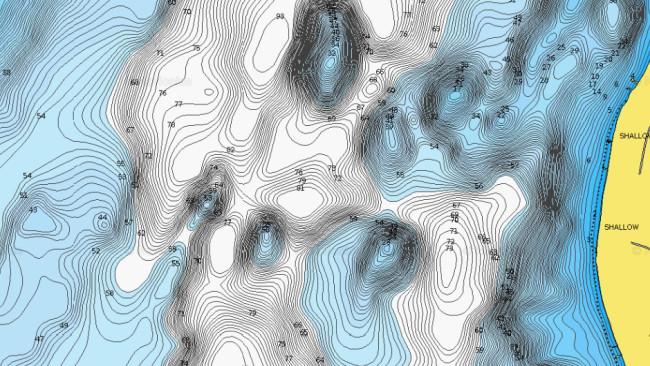
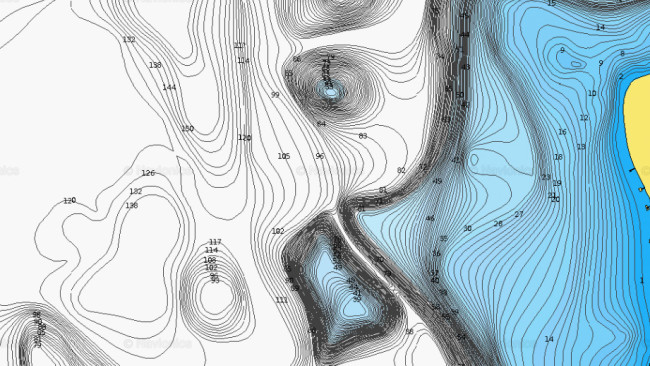
Where to hunt
Hahner doesn’t get too excited for the fall cisco-smallmouth bite until the water temp reaches 48 degrees. From there all the way down to 40 is prime time to capitalize.
While you can certainly catch bass up shallow in this situation, ciscoes usually still stay out in open water during the day, and the bass won’t be far behind. So, you can eliminate a lot of water right out of the gate.
“If you look at a lake map for a lake you want to fish and find the deepest water, that’s where the ciscoes live,” says Hahner. “It’s definitely challenging, and it helps to have a game plan. I like to start shallow in the morning to see if there are any fish still up. If you want numbers of smallmouths, anywhere from 3 to 10 feet is usually good, and a lot of fish will stick around shallow waiting for the ciscoes to move back up in the afternoon. From there, I work my way out to the main basin where you have a shot at big ones.”
Shallow flats with sharp breaks leading to the basin can be the juice because ciscoes can easily move shallow under the cover of darkness and then retreat to the safety of open water. If there are points or humps nearby, even better.
“Ciscoes move a lot and are really active in cold water, so the smallmouths have to stay active, too,” Hahner adds. “But, as the water cools off the bass will semi-relate to structure nearby where the ciscoes will spawn. That’s why fall is the easiest time to target these big smallmouths. Because when you know where the bait will be, you know where the bass will be.”
Trust your electronics
Smallmouths that feed on ciscoes are almost a different species from other smallmouths. They are very mobile and don’t like to linger in one area for long. That’s why being in tune with your graphs can be a huge difference maker.
“I use my graph 95 percent of the time for this kind of fishing. You really need to trust your electronics and know that you’re not just floating around out in the middle doing nothing,” Hahner says. “Usually the fish are deep enough you can idle over them without spooking them, but really I like to idle around to find the bait. When you find schools of ciscoes, you can guarantee there are bass nearby.
“I taught myself to visualize the ciscoes as structure. So, when I drop a waypoint on them, I now know where I’m casting. They don’t stay in the same spot, but it helps you treat something that is suspended as if it’s a rock pile or clump of grass.”
Always be prepared to move. If you have found a few schools of bait and stop seeing any activity on your graph as you move around, then it’s time to idle some more. According to Hahner, you can generally find a “sweet spot” where the bait likes to congregate, whether it be close to a break, hump or deeper portion of the basin. After a while you can dial it in.
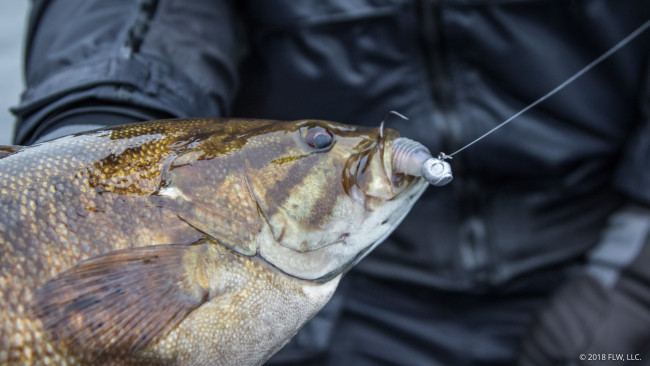
Match the hatch
Swimbaits are the name of the game when chasing nomadic smallmouths.
“The fish are usually looking up, so you want to keep your bait higher in the water column,” Hahner says. “That’s why I like A-rigs and swimbaits. I use some other baits, but ciscoes swim pretty fast and are very active in cold water, so you need to be able to fish faster.”
Hahner almost always starts out throwing a five-wire, bladed umbrella rig with three hooks. On the top, a pair of 3.3 Keitech Swing Impact FAT swimbaits act as the dummies while the other three wires get a mix of either 4.8 or 5.8 Swing Impact FATs. His rod of choice is an 8-foot, heavy-action St. Croix Legend Tournament, with a 7.1:1 gear ratio reel and 20-pound-test fluorocarbon.
“I like to use the A-rig for a gauge as to how active the fish are. If they are just bumping it or eating the small baits, then I know to downsize, or I’ll switch over to a single swimbait.”
For his single swimbait, a 3.3 or 3.8 Swing Impact FAT on a 3/8- or 1/2-ounce head does the trick. Hahner will also mix in a 4-inch Easy Shiner for a slimmer profile. A 7-foot, 4-inch, medium-heavy Legend Tournament rod allows him to toss the bait far and pick up line quickly. For line, 10-pound-test fluorocarbon handles most situations, though he’ll go to 8 if he needs to keep the bait down. He’ll sometimes even toss a 6-inch or even 8-inch swimbait such as the Megabass Magdraft and has no issues getting them to eat it.
“I’ve pulled 8- to 12-inch ciscoes out of 21-inch smallmouths before, so they aren’t afraid of big baits,” Hahner adds.
Though swimbaits carry the team, Hahner also keeps several rods rigged with different options to adjust to the mood of the fish. A spybait, hair jig, spoon and under-spin all have a time and place. He’ll even have a drop-shot rigged with a long drop and a minnow bait if he really needs to slow down – though that usually isn’t the case.
“You hardly want to fish anything on the bottom,” Hahner says. “The closest I’ll get may be 5 feet, but otherwise I try to stay at the level I mark the bait in, or if I’m on a shallower flat I keep the bait halfway down. For the hair jig and A-rig, I like to make a cast past where I think the fish are and let it pendulum into their zone. Otherwise, you can cast out a swimbait, count it down and start reeling. The biggest thing is just keeping your baits where the fish are and staying in front of fish as long as possible.”
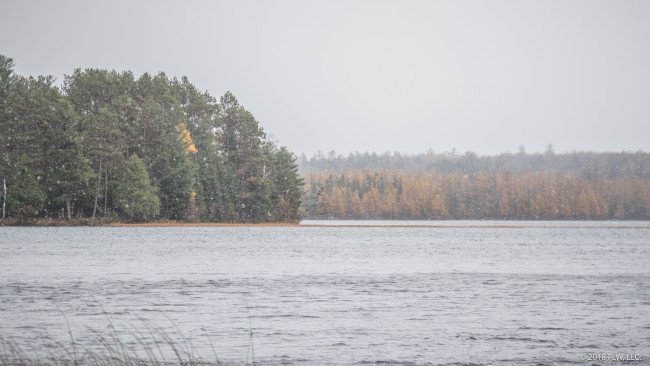
Tough it out
The hardest part about fishing in the fall in the North is that winter is just around the corner. Snow is always a possibility, and strong north winds make it less than desirable to be on the water. But if you prepare and game plan properly, you could encounter some of the biggest smallmouths you’ve ever seen.
“A lot of people get spun out trying to fish this way, but trust me, if you have a strategic approach and trust your electronics you’ll catch fish,” Hahner says. “Late in the year is really your best shot at a 7-plus-pounder, and I look forward to it every year.”